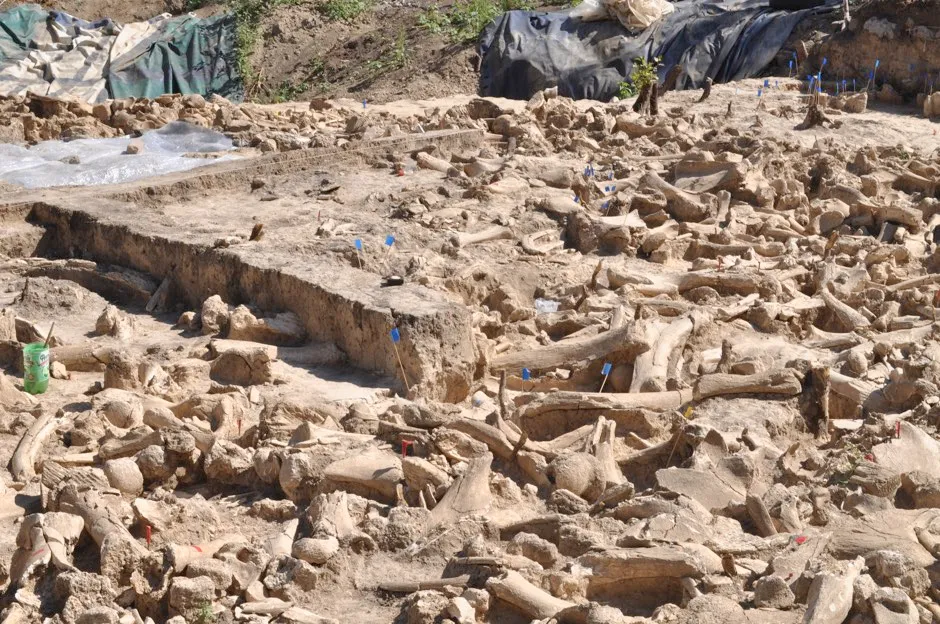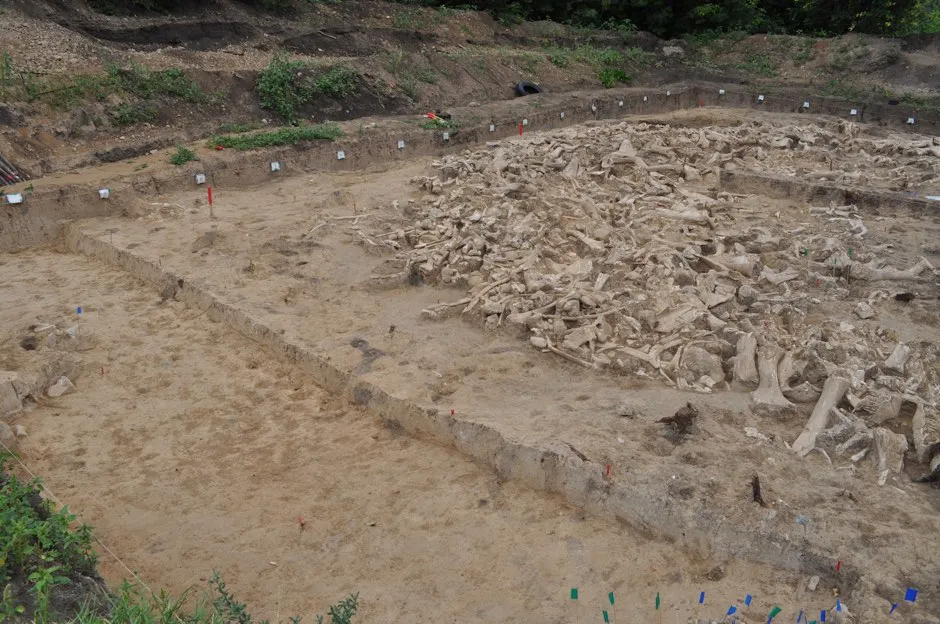- Researchers discover 20,000-year-old mammoth-bone structure built by humans.
- A total of 51 lower jaws and 64 individual mammoth skulls were used to construct the walls of the 80 square metre structure.
- Discovery suggests Ice Age humans were able to adapt to freezing conditions.
Mysterious bone circles made from the remains of dozens of mammoths have helped shed light on how ancient communities survived Europe’s Ice Age.
Around 70 of these structures are known to exist in Ukraine and the west Russian Plains.
The bones at one site are more than 20,000 years old, new analysis suggests, making it the oldest such circular structure built by humans discovered in the region.
Researchers say the bones were most likely sourced from animal graveyards, and the circle was then hidden by sediment and is now one foot below current surface level.
The majority of the bones found at the Russian Plains site are from mammoths.
Read more about mammoths:
- Who are the hunters of rare mammoth tusks in Russia?
- Ross Barnett: Why should we be interested in prehistoric animals that aren’t dinosaurs?
A total of 51 lower jaws and 64 individual mammoth skulls were used to construct the walls of the 80 square metre structure and scattered across its interior.
Scientists also found small numbers of reindeer, horse, bear, wolf, red fox and arctic fox bones.
For the first time, the archaeologists from the University of Exeter found remains of charred wood and other soft non-woody plant remains within the circular structure near the modern village of Kostenki, about 500km south of Moscow.
They say this indicates people were burning wood as well as bones for fuel, and the communities who lived there had learned where to forage for edible plants during the Ice Age.

Dr Alexander Pryor, who led the study, said: “Kostenki 11 represents a rare example of Palaeolithic hunter-gatherers living on in this harsh environment.
“What might have brought ancient hunter-gatherers to this site?
“One possibility is that the mammoths and humans could have come to the area en masse because it had a natural spring that would have provided unfrozen liquid water throughout the winter – rare in this period of extreme cold.

“These finds shed new light on the purpose of these mysterious sites.
“Archaeology is showing us more about how our ancestors survived in this desperately cold and hostile environment at the climax of the last Ice Age.
“Most other places at similar latitudes in Europe had been abandoned by this time, but these groups had managed to adapt to find food, shelter and water.”
Read more about early humans:
- Early humans tucking into cooked carbs as long as 170,000 years ago
- Early humans feasted on fish in the Sahara Desert 10,000 years ago
The last Ice Age, which swept northern Europe between 75-18,000 years ago, reached its coldest and most severe stage at around 23-18,000 years ago.
Most communities left the region, probably because of lack of prey to hunt and plant resources they depended upon for survival, scientists say.
Bone circles were eventually also abandoned as the climate continued to get colder and more inhospitable.
Previously, archaeologists have assumed the circular mammoth bone structures were used as dwellings, but the new study suggests this may not always have been the case.
The research, conducted by academics from the University of Exeter, University of Cambridge, Kostenki State Museum Preserve, University of Colorado Boulder and the University of Southampton, is published in the journal Antiquity.
Reader Q&A: What did the woolly mammoth eat?
Asked by: Mike Nickless, Redditch
The ancestral mammoth (Mammuthus meridionalis) lived in warm tropical forests about 4.8 million years ago and probably had a similar diet to the modern Asian elephant. The woolly mammoth (Mammuthis primigenius) evolved later, as the climate cooled, and was a grazer.
It probably used its tusks to shovel aside snow and then uprooted tough tundra grasses with its trunk. They needed to be so big because their stomachs were giant fermentation vats for grass – which is not nutritious.
Lyuba, the baby mammoth found preserved in the Siberian permafrost in 2007, had adult faeces in her stomach, suggesting mammoth babies ate their mother’s dung in order to give their digestive system the correct bacteria.
Read more:
